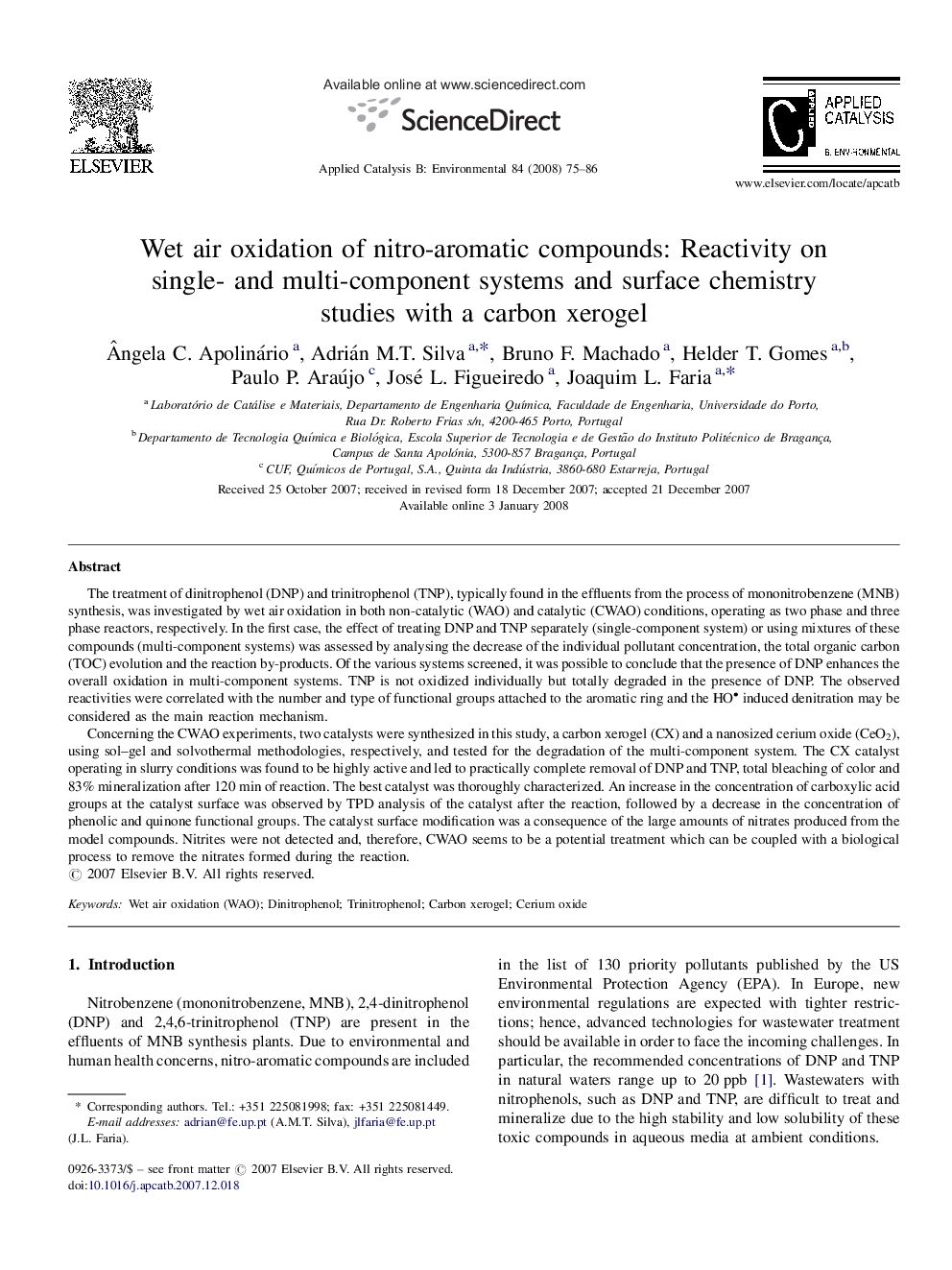| Article ID | Journal | Published Year | Pages | File Type |
|---|---|---|---|---|
| 47895 | Applied Catalysis B: Environmental | 2008 | 12 Pages |
The treatment of dinitrophenol (DNP) and trinitrophenol (TNP), typically found in the effluents from the process of mononitrobenzene (MNB) synthesis, was investigated by wet air oxidation in both non-catalytic (WAO) and catalytic (CWAO) conditions, operating as two phase and three phase reactors, respectively. In the first case, the effect of treating DNP and TNP separately (single-component system) or using mixtures of these compounds (multi-component systems) was assessed by analysing the decrease of the individual pollutant concentration, the total organic carbon (TOC) evolution and the reaction by-products. Of the various systems screened, it was possible to conclude that the presence of DNP enhances the overall oxidation in multi-component systems. TNP is not oxidized individually but totally degraded in the presence of DNP. The observed reactivities were correlated with the number and type of functional groups attached to the aromatic ring and the HO induced denitration may be considered as the main reaction mechanism.Concerning the CWAO experiments, two catalysts were synthesized in this study, a carbon xerogel (CX) and a nanosized cerium oxide (CeO2), using sol–gel and solvothermal methodologies, respectively, and tested for the degradation of the multi-component system. The CX catalyst operating in slurry conditions was found to be highly active and led to practically complete removal of DNP and TNP, total bleaching of color and 83% mineralization after 120 min of reaction. The best catalyst was thoroughly characterized. An increase in the concentration of carboxylic acid groups at the catalyst surface was observed by TPD analysis of the catalyst after the reaction, followed by a decrease in the concentration of phenolic and quinone functional groups. The catalyst surface modification was a consequence of the large amounts of nitrates produced from the model compounds. Nitrites were not detected and, therefore, CWAO seems to be a potential treatment which can be coupled with a biological process to remove the nitrates formed during the reaction.
